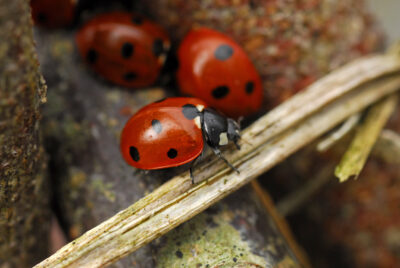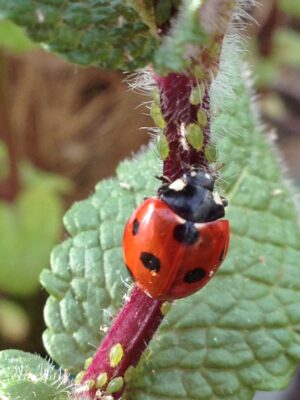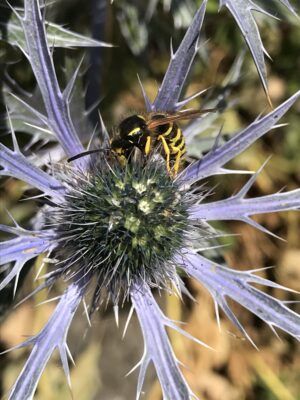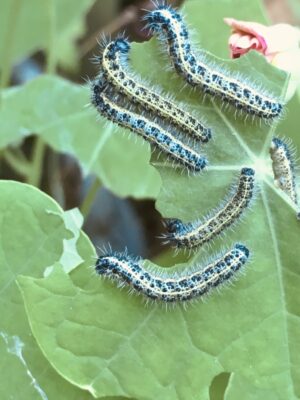We need to rethink our stance on greenfly, aphids, slugs and snails, says Jean Vernon

Everything in nature is interconnected, pretty much every single creature has a role to play and a vital place in the food chain. It’s like a baton being passed from runner to runner in the Olympic relay race, but the chain is far more complicated and runs in every direction, crosses over and even goes backwards and up and down. When the baton is dropped there’s a huge ongoing effect, like a pebble dropping into a pool and creating ripples. Nature is complicated, intricate and so very, very precious and while we will never understand its true complexity we need to try. Gardeners are so well placed to make huge changes to the natural balance. We have been brainwashed into thinking that the little bugs that attack our plants are the enemy, instead of looking closely, admiring their incredible survival skills and the role that they play in the ecosystem. Everything is a meal for something. If you don’t want slugs and snails eating your plants then don’t grow slug and snail food. Simple.
Be proactive

When there’s something munching your seedlings or eating your prized plants it can be hard to stand back and let it happen. Instead, be proactive and vigilant. The best way to keep your tender and very delicious shoots (to slugs and snails) safe is to keep them out of harm’s way. You can do that by raising your seedlings inside your greenhouse and protecting them with barriers to stop hungry gastropods from reaching them. Plant everything in succession so if you have a crop failure of any sort you haven’t lost everything. Learn what attracts slugs and snails, use decoys to distract them like lettuce leaves and check regularly for any invaders. Collect them up and add them to the compost system, they will be happy in there and can continue recycling your organic waste. Not all slugs eat our plants, many are detrivores eating the garden detritus and helping turn it into plant food and soil conditioner.
Do night time checks in the garden and greenhouse. Arm yourself with a head torch and check under and around any susceptible plants. Check your slug and snail barriers and see where they are breached by leaves and stems of plants.
Snail magic

We need to fall in love with snails. They are the most incredible creatures. And they are the favourite food of our song thrushes. These magnificent birds are now on the Red danger list, which loosely translates to – they are in big trouble. That breaks my heart because I know that the root of their demise lies firmly at our door, i.e., humans. As gardeners we really can make a different and if you only change one habit or one thing in your garden, make that change to dump the poisons. You will be taking action to keep not only your garden healthy but your family too, especially if you harvest things to eat from your plot.

Then just fall in love with snails – please. Not only are they food for wildlife, especially the song thrush, but when their empty shells break down, the calcium is used by other wild birds to lay stronger eggs. But more bizarrely there are three species of solitary bees in the UK that use empty snail shells to make nests to raise their babies. So next time you find an old snail shells full of ‘gunk’ move it to a safe and sheltered place in your garden as it could be a baby bee nursery. These bees do not sting so are safe for pets, children and you!
Feed the pollinators

We are all aware that many pollinators need nectar and pollen to survive. But did you know that some precious pollinators need bugs to complete their lifecycle? The most obvious example is the ladybird. You might not realise it but ladybirds are pollinators too. Adult ladybirds and ladybird larvae need masses of aphids to survive, so if you spray your roses when the aphids arrive you starve the ladybirds. Ladybird females lay their eggs where they know there will be aphids, so that when their larvae hatch, they have a copious source of food. So, that means when you first see aphids in your garden, nature is already preparing to deal with them. You might see beautiful blue tits swooping down and taking them, or just wait a week or two for the ladybird army to arrive.

Then there are the baby butterflies that many regard as a pest. But without the baby stage (otherwise known as caterpillars) you don’t get the beautiful butterflies. Not only that, but the reason that there are often so many caterpillars is because those caterpillars are food for some predatory pollinators like the social wasps and hornets. These maligned creatures are really important in the ecosystem, they collect caterpillars and other things we regard as garden pests and they feed them to their babies. But the birds need the caterpillars too. One bluetit nest needs hundreds of caterpillars every day to feed the developing chicks. So, before you reach for the pesticides – stop and think because you are about to deprive many precious creatures of their food source. You are also breaking the food chain and the knock-on effect will be huge. Step back and live and let live. You will start to see nature embrace your garden and an increase in wildlife too.










